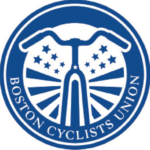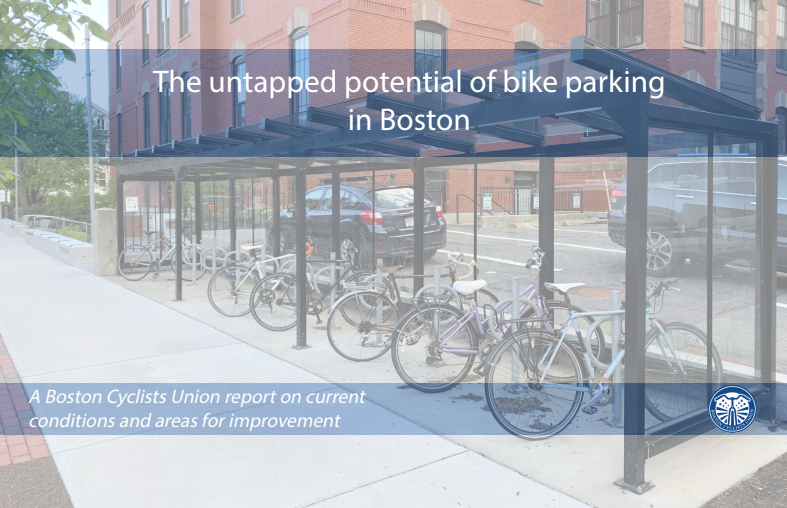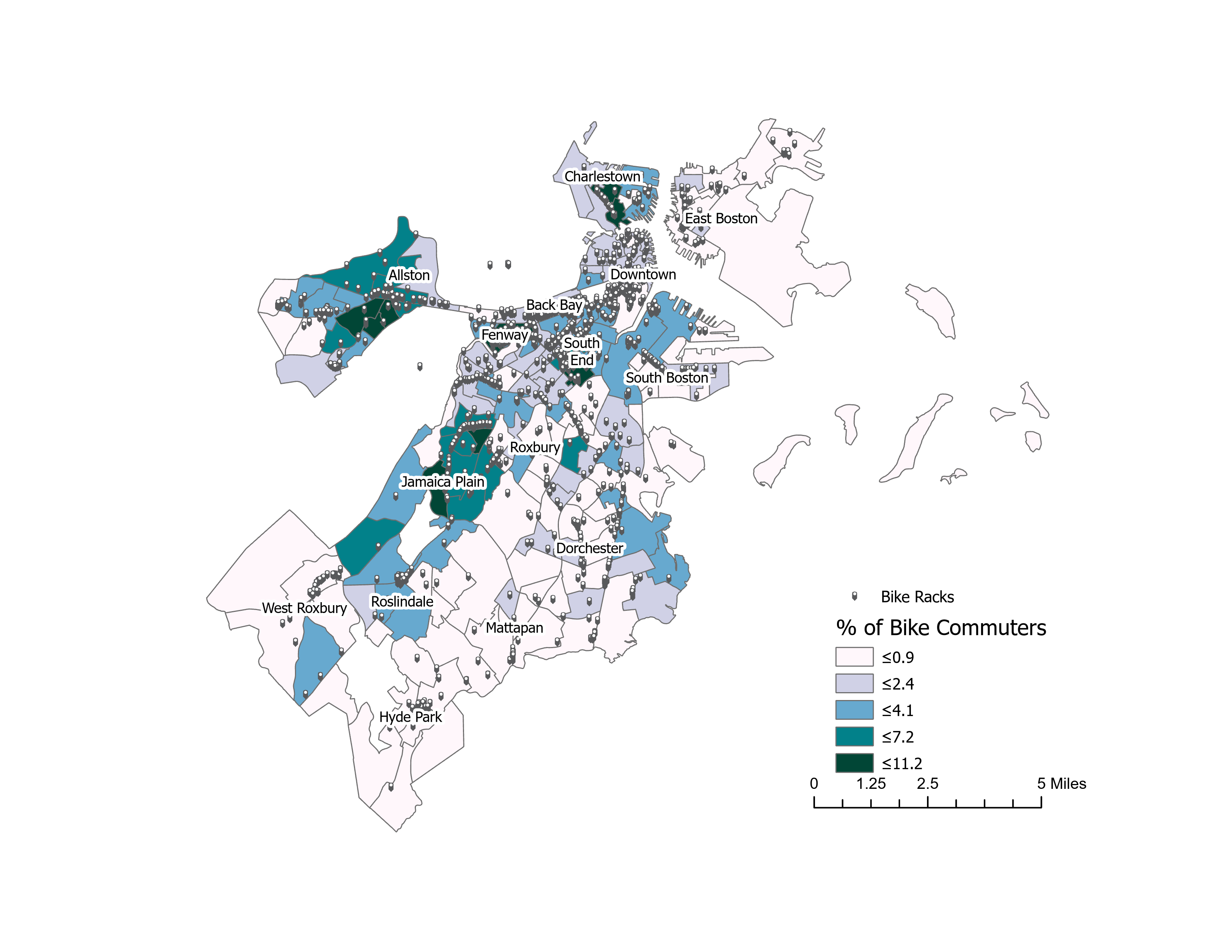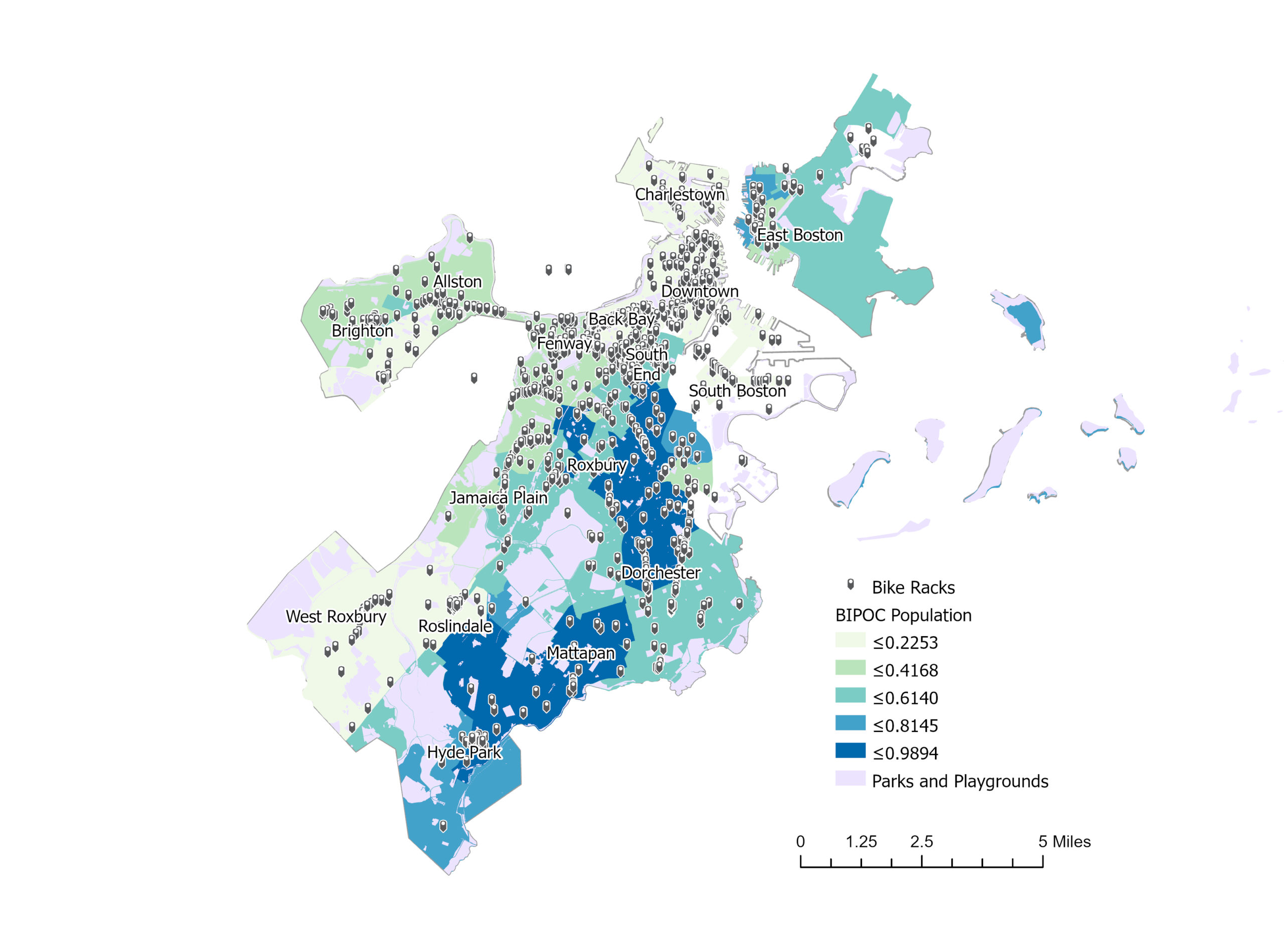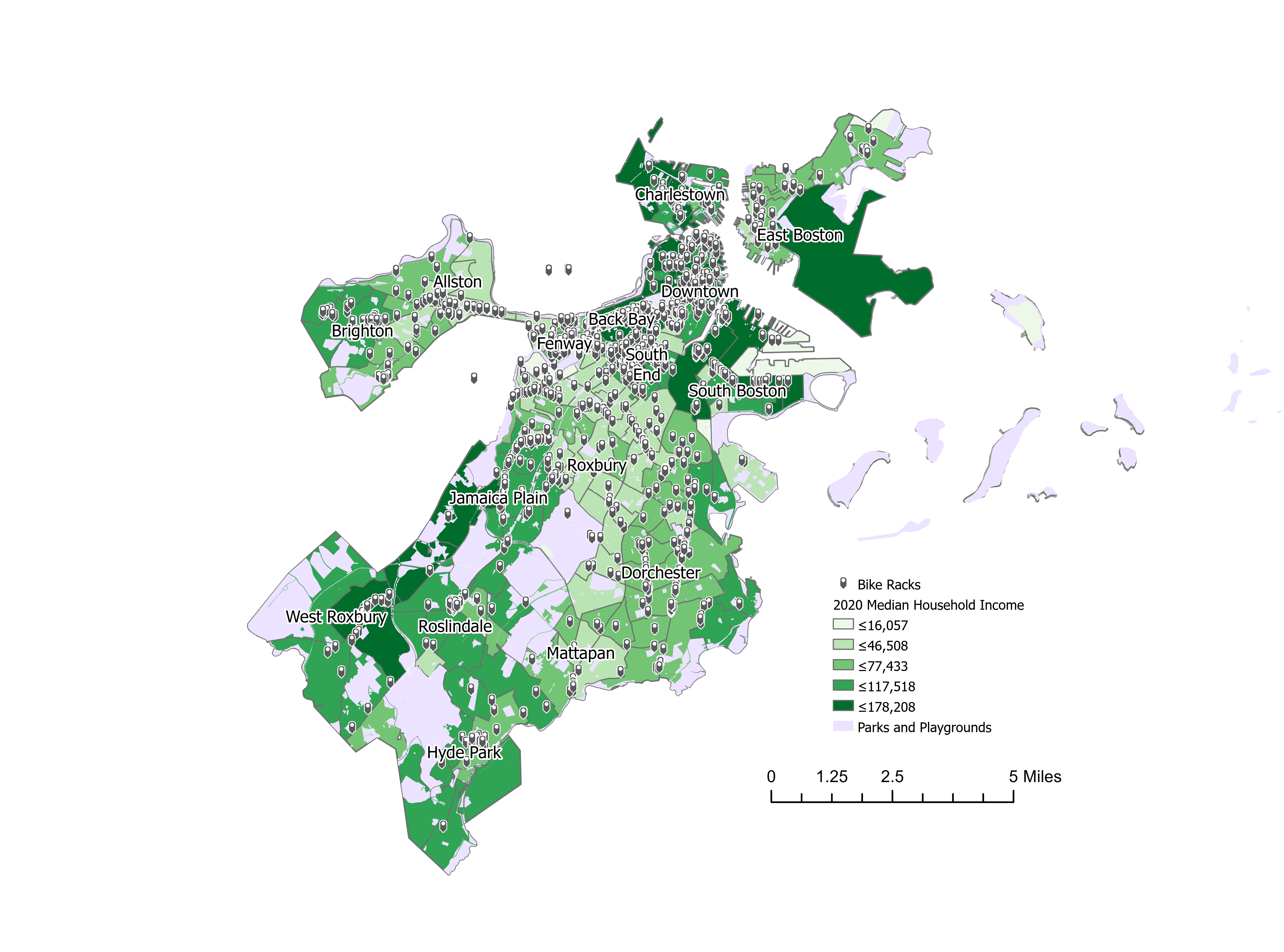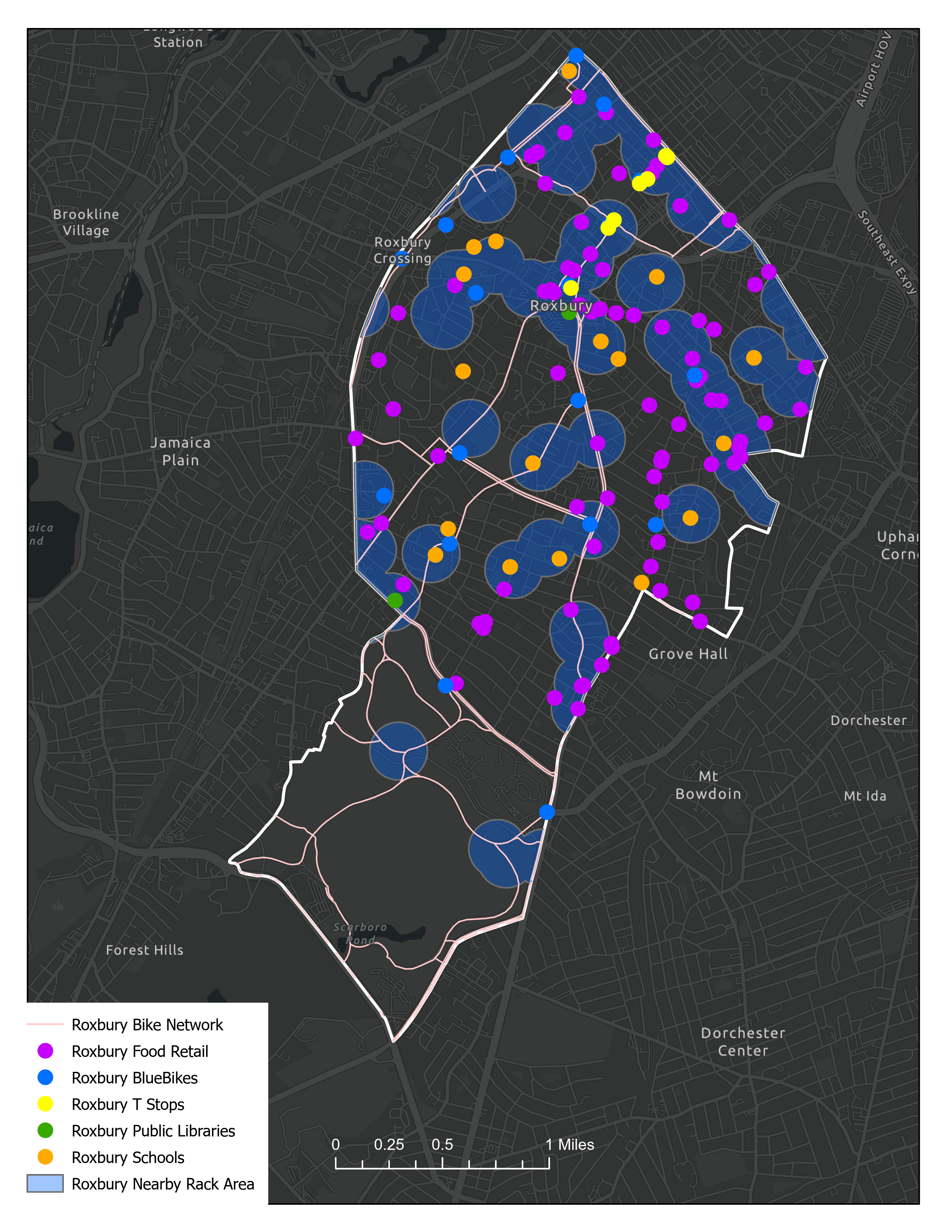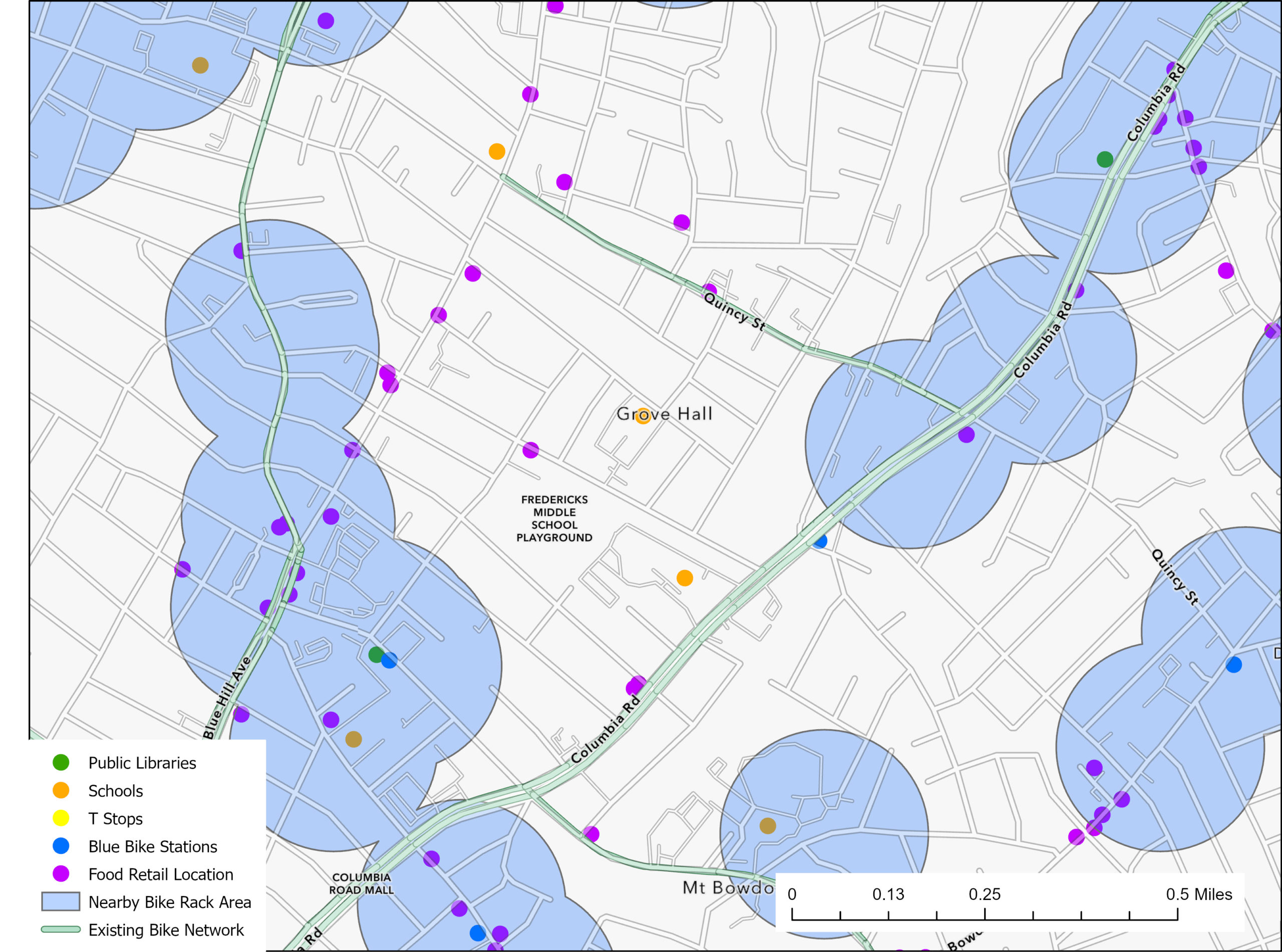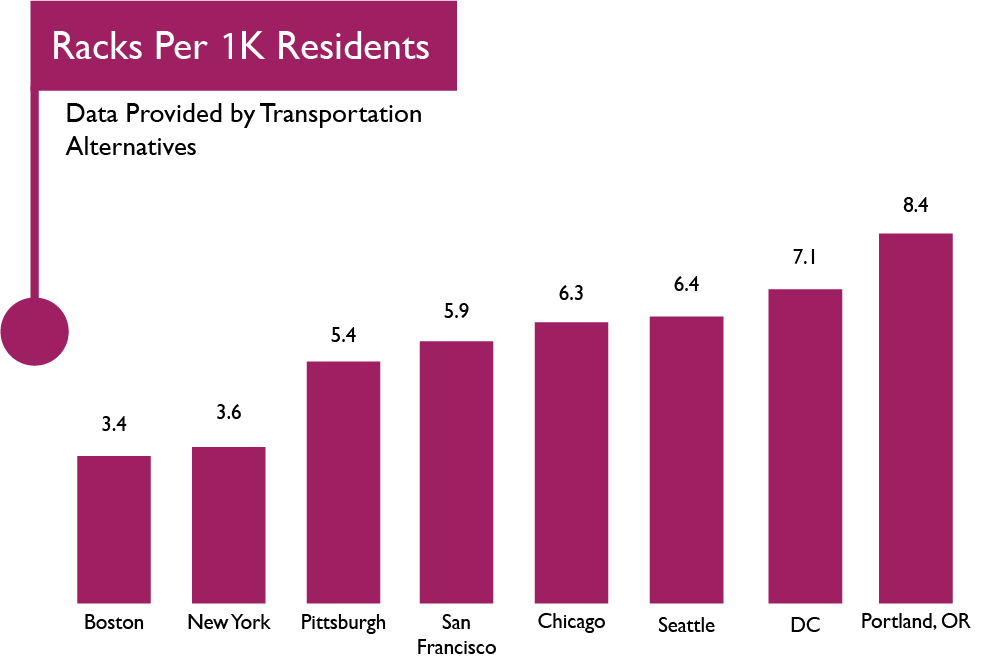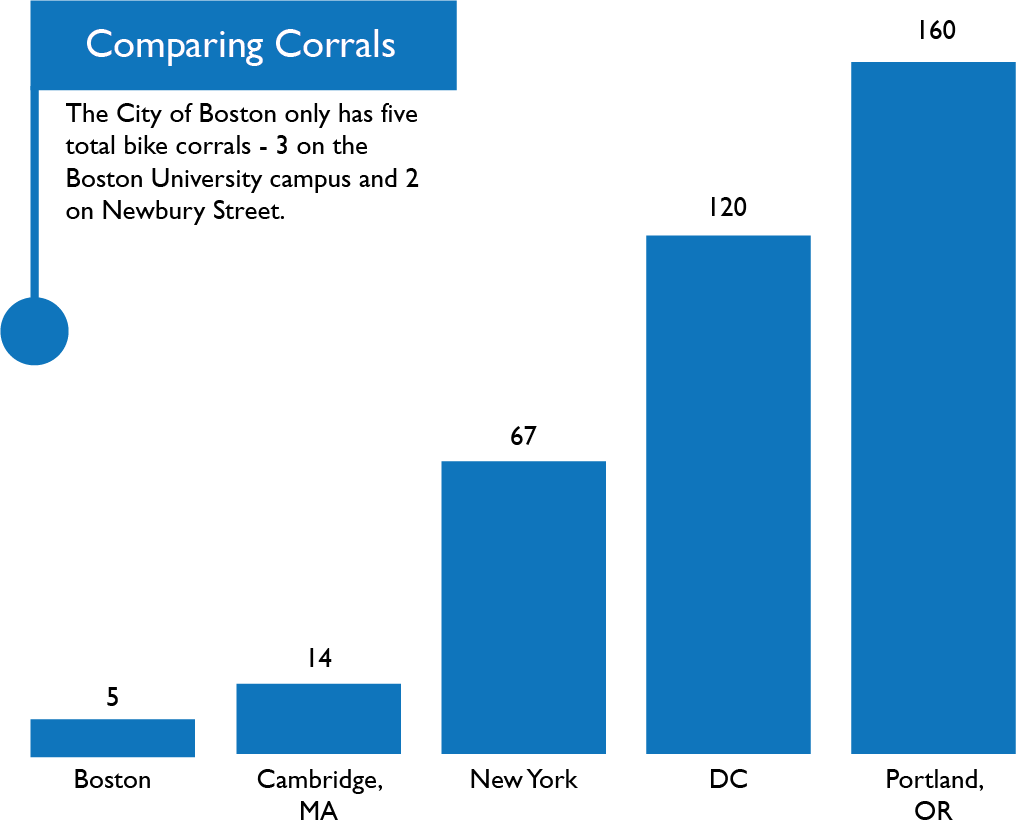The Untapped Potential of Bike Parking in Boston
Bike parking is a crucial—but often overlooked—part of infrastructure needed to support biking as a viable mode of transportation. Cities need not only bike lanes to get people safely from Point A to B; they also need bike parking so people can safely store their bikes once they’ve reached Point B.
Although the City of Boston has focused in recent years on creating safe bike routes, bike parking has received far less attention. So in 2021, the Boston Cyclists Union (BCU) launched a research project to assess the state of bike parking, and to provide suggestions for improving it.
The resulting report, “The Untapped Potential of Bike Parking in Boston,” provides a comprehensive case that bike parking is needed in all neighborhoods so people can choose to get around their communities by bike. The report also emphasizes the importance of bike parking for Boston to meet its climate and transportation goals, such as quadrupling bike commute mode share by 2030. And it touches on the role of bike parking as Boston begins its recovery from COVID and as people begin to reconsider the ways in which they get around. The report concludes with policy recommendations for the City of Boston.
The report was completed in Fall 2021. Since then, Boston has already made progress on some of the report’s recommendations. We look forward to working with Boston and the new Wu administration to make bike parking even more accessible and, as a result, to get more people on bikes in Boston.
Read the full report (PDF) here. A greatly condensed version follows below.
The State of Bike Parking in Boston
The City of Boston has roughly 1,500 municipal bike racks. This compares to more than 100,000 free on-street parking spaces, metered parking spaces, and privately owned parking garage spaces situated across the city. While meters do charge a fee, it should be noted that the majority of vehicle trips taken in the United States end in free spots, and with the availability of apps such as Spot Angels, it is easier than ever to find free parking.
In addition, residential parking permits in Boston are available free of charge, which further incentivizes driving over sustainable transportation options, like biking and transit. As of January 2015, there were 94,000 residential parking permits in Boston—a 25% increase from one decade prior.
Data available from Analyze Boston show that installation totals for bike parking vary from year to year. Yet the overall trend of installations has remained relatively flat over the past 20 years, hovering around 120 racks per year—even though bike ridership soared over the same period. The result: In Boston, it’s harder and harder for people who bike to find a safe place to lock up.
Spatial Distribution of Bike Racks in Boston
There are significant disparities in distribution of bike racks in Boston. The following maps visualize the locations of municipal bike racks, in the Right of Way, and do not include private racks or racks installed by developers.
While bike racks are located throughout the city, they are most concentrated in the downtown business districts, as can be seen in Figure 1. The highest concentrations of bike racks are in downtown, central business areas, and also clustered near major transit hubs. This is expected, and also reveals that the city has worked to ensure bike parking is available in high-traffic areas.
Figure 2 shows bike parking per capita. Here, the imbalances are also readily apparent.
Bike commuters are concentrated in areas where there are higher densities of bike racks. Meanwhile, the rates of bike commuting are lower in areas with less bike parking. (Figure 4.) These dynamics show the need for parallel strategies to add more bike parking in areas where there is already high demand, based on mode share, and to address existing imbalances by adding bike parking where there are lower rates of bike ridership to encourage more people to bike in those areas. It would be shortsighted and inequitable to only add bike parking where people are already biking under the false assumption that people in other parts of the city don’t or won’t want to bike.
To work toward these goals, it will be important to consider bike parking as part of an overall bike infrastructure plan. Figure 5 shows bike rack locations compared with Boston’s current network of separated/protected bike lanes. Not only does this map show where gaps exist in that network, but also that many areas along the network lack bike parking.
Figure 6 shows BIPOC populations by census tract compared with bike rack locations. Gaps in bike parking not only result in or exacerbate inequities by increasing theft and creating a financial burden, but they also actively discourage people from choosing to bike in the first place. Considering the importance of equitable access to mobility, transportation justice should be a key part of siting decisions and long-term planning around bike parking.
Figure 6
The same League of American Bicyclists report also notes that lower-income individuals are more concerned than those with higher incomes about secure bike parking, because the burden of replacing a bike is much greater with less disposable income. Figure 7 shows how bike rack locations compare to median household income in the City of Boston, indicating where there are gaps in equitable distribution.
Figure 7
Neighborhood Comparisons
Zooming in on some of Boston’s neighborhoods shows how different communities have different concentrations of bike parking. For example, Figure 8, covering the South End, shows “bike rack areas” bounded by a blue buffer. (“Bike rack areas” are defined as areas where a bike rack is 0.1 miles or less away). In contrast, Figure 9 shows bike rack areas in Roxbury. Even at a glance, it’s readily apparent that there are significant differences in coverage and access between the two neighborhoods.
Figure 8
Figure 10 and Figure 11 show two locations where there are gaps in bike parking. Again, “bike rack areas” are shaded in blue and represent areas that are within 0.1 miles of a bike rack.
In the Bowdoin/Geneva neighborhood, there are many food retail locations, both at the main intersection of Geneva and Bowdoin, as well as along Geneva Avenue, which has a bike lane. However, many of these locations are far from bike parking, rendering them less accessible by bike. This would be a key location to add bike parking.
Figure 10
Similarly, Grove Hall—which has abundant food retail locations, several schools, BlueBike stations, and two Boston Public Library branches—lacks bike parking. Although bike racks are available on parts of Columbia Road and around the Blue Hill Avenue and Warren Street intersection, there are significant gaps elsewhere in the neighborhood.
Figure 11
Bike Parking in Other Cities
Although Boston has invested more resources in bike lanes of late, bike parking has received less attention. As a result, bike parking is relatively scarce. Figure 12 shows a graph of bike parking per capita in several U.S. cities, with Boston bringing up the rear.
Figure 12
Many cities use bike corrals to increase parking capacity, particularly near businesses. In the City of Cambridge and in Minneapolis, corrals are added seasonally to account for increased ridership in warmer months. In D.C. and Portland, corrals are used to provide space for both bike parking and micromobility parking.
In contrast to other cities, Boston has only a handful of bike corrals. There are three near Boston University—which the university funded to provide for their students—and two small corrals on Newbury Street, adjacent to parklets. (Although Boston’s 2018 budget included funding for a bike corral on Centre Street in Jamaica Plain, it had yet to be installed as of summer 2021.)*
Recommendations
The following are the BCU’s recommendations for improving bike parking in Boston. Click on recommendations to reveal more details about each.
